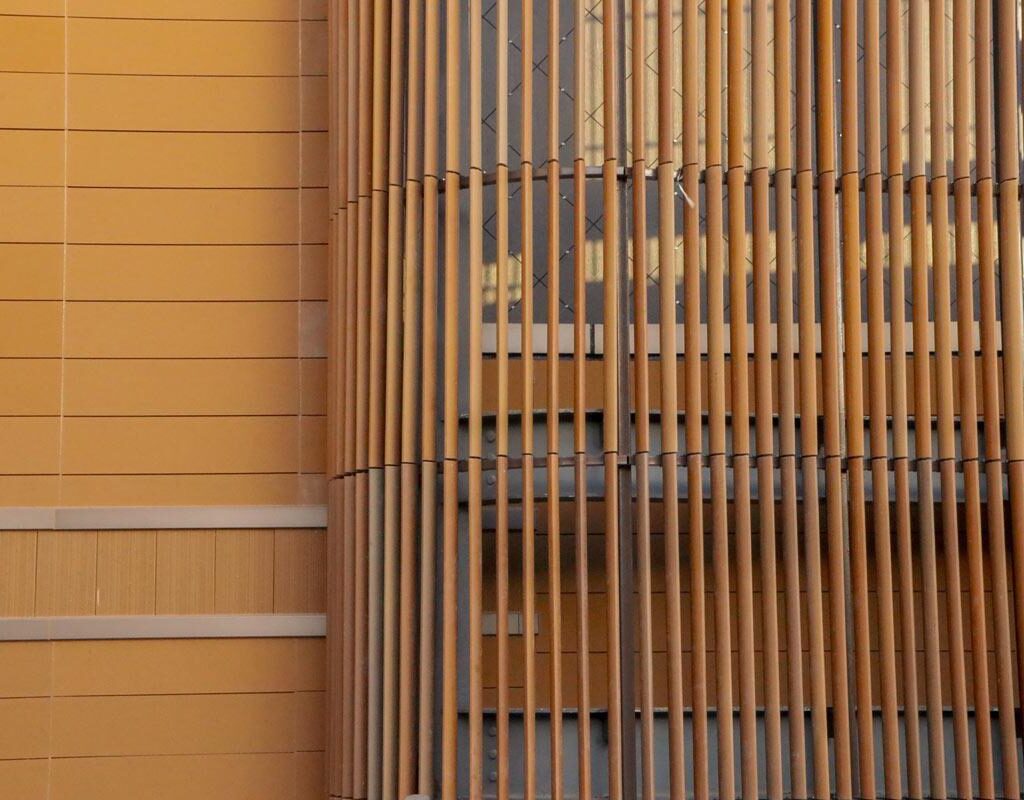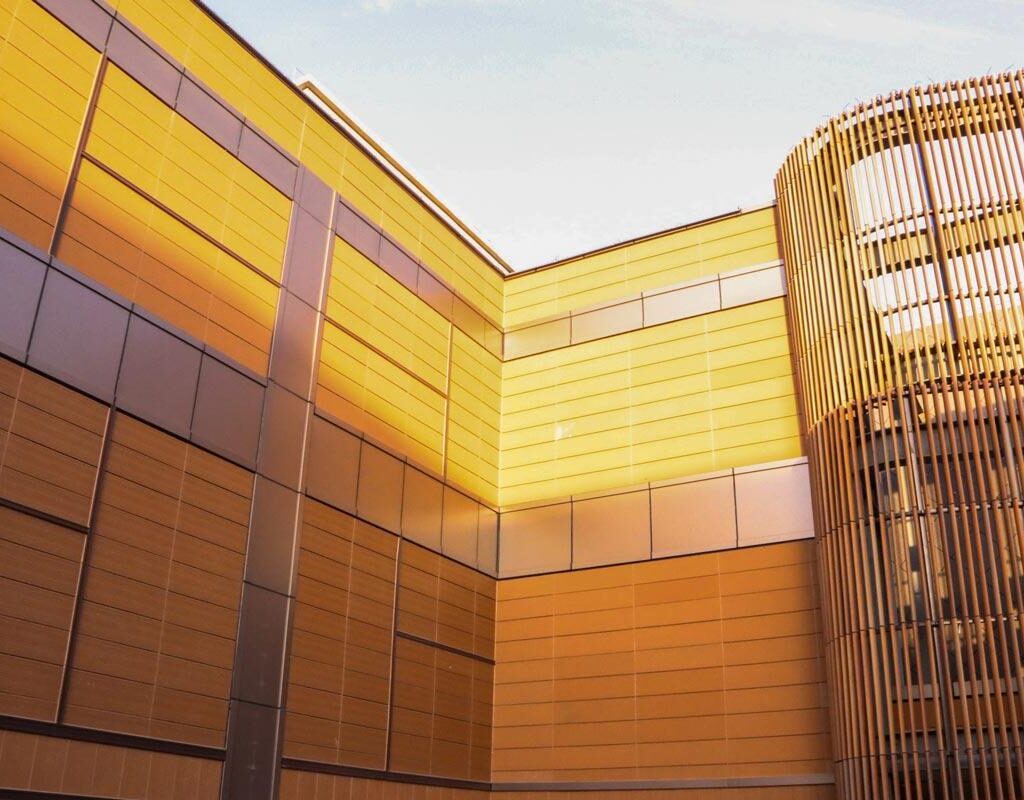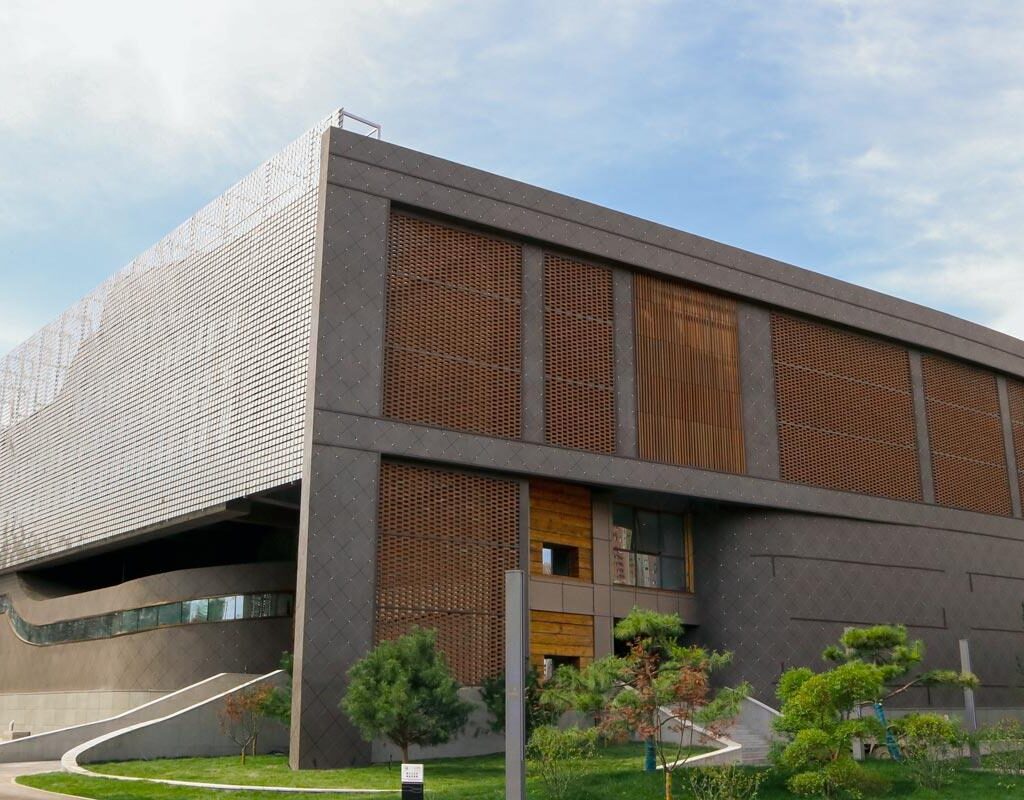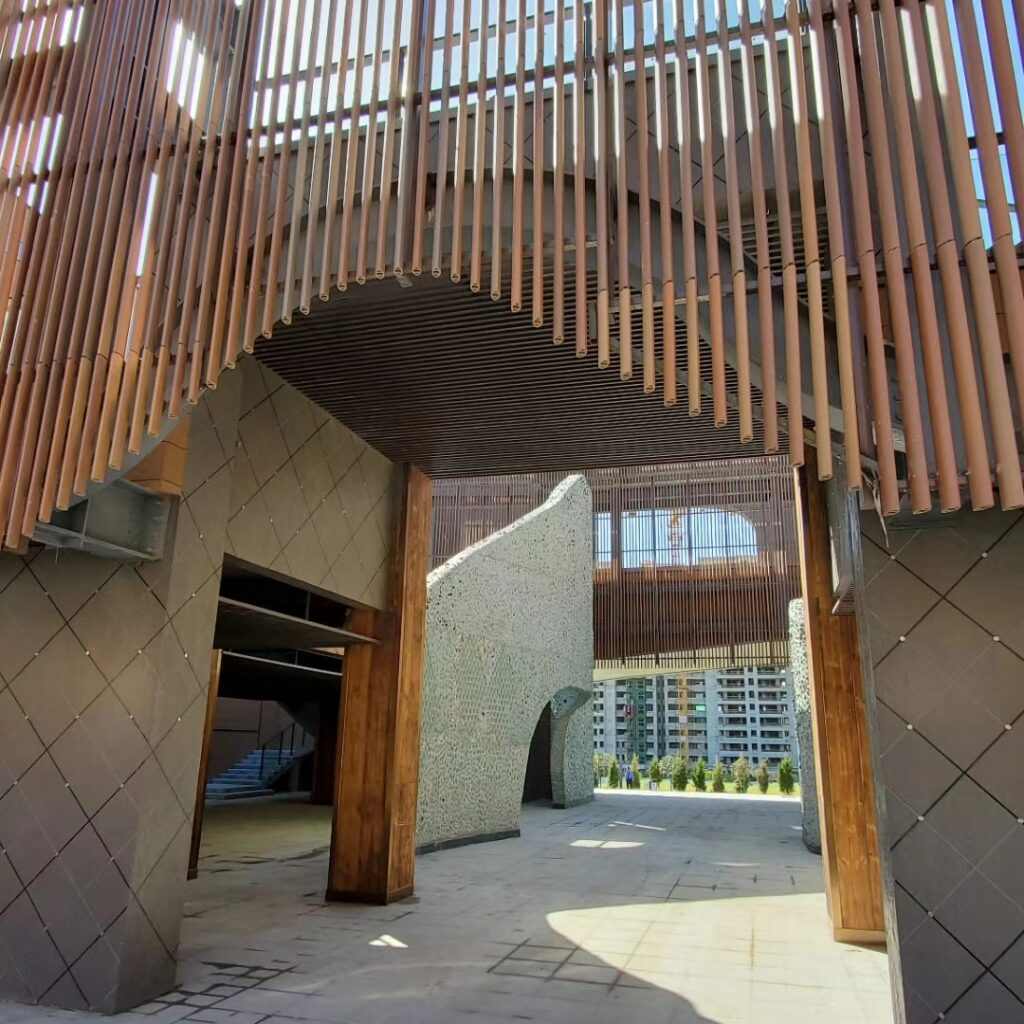Musician–Tongchuan Museum of China
Tongchuan Museum of China is located Located at the intersection of Changqing South Road and Chaoyang Road. Construction started in July 2017 and completed and opened in May 2020. The museum is a comprehensive museum that comprehensively displays the history, culture and urban development of Tongchuan. It covers an area of 60,000 square meters, a building area of 31,000 square meters, and an exhibition area of 12,000 square meters.
The Tongchuan Museum takes basic exhibitions as the main body, supplemented by thematic exhibitions, folk art exhibitions and temporary exhibitions; with the assistance of cultural relic restoration and protection experience,and public leisure experience, it builds a three-dimensional and diverse cultural communication system. Its completion and opening not only enriched the cultural needs of the local people, but also added a new cultural landmark to Tongchuan.
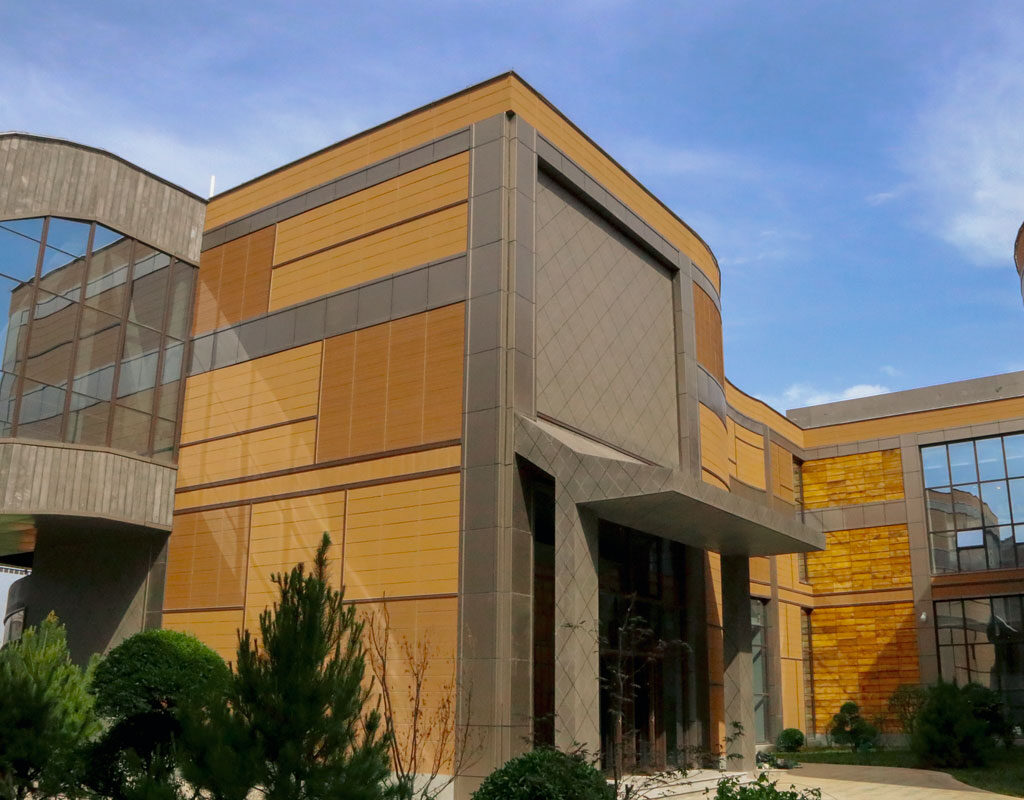
The architectural style of Tongchuan Museum embodies the design concept of “Shanshui City”. The main building has a novel design and a modern style. It crosses the inner street to show the geographical and transportation location of Tongchuan. Its unique wind-driven curtain wall is composed of 110,000 pieces of metal sheets and covers an area of about 3,800 square meters. It is currently the largest wind-driven curtain wall building in China. The fresh breeze is coming, like water waves, and the flowing curve implies the mountains and rivers. The inner wall veneer of Tongchuan museum is decorated with LOPO terracotta panels and terracotta baguettes with smooth colors and simple styles, which shows the unique charm of the ancient city of ceramic culture.
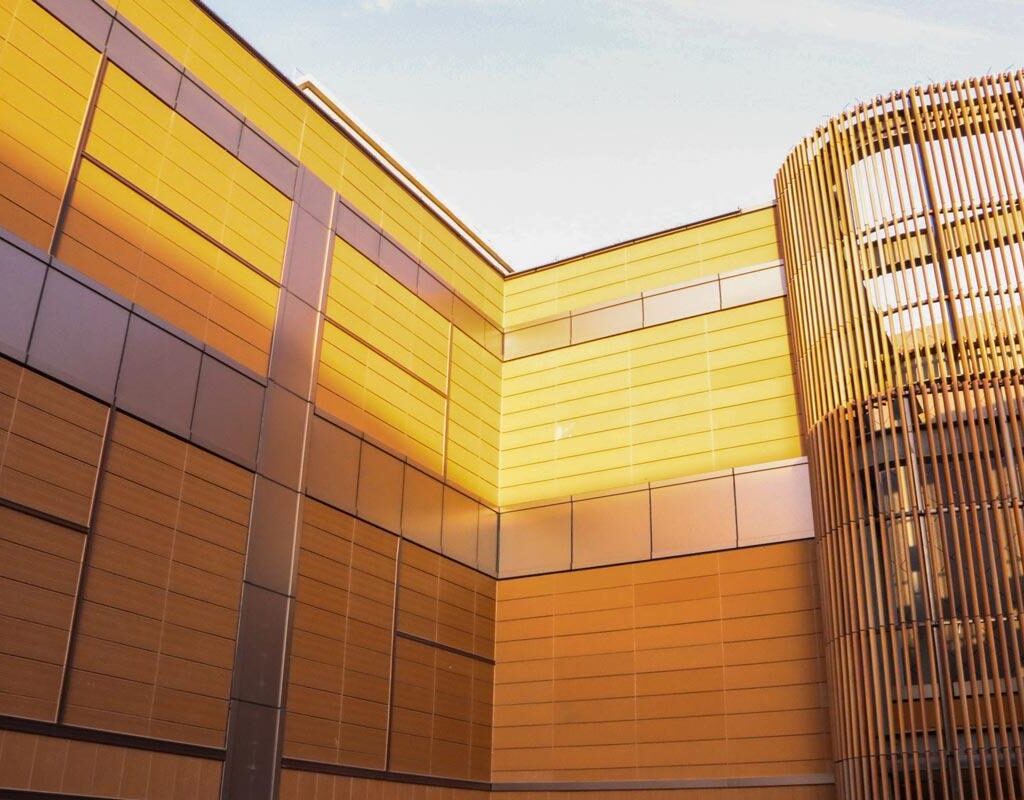
In order to highlight the design concept of “Shanshui City”, the architects and LOPO have made many interesting attempts and innovations in the design of ceramic plate products.For example, transparent droplet glazes have been added to the facade panels. These droplet glazes are firmly attached to the clay, as if they were water droplets tapping on the facade,For example, transparent drip glazes are added to the exterior wall panels. These drip glazes are firmly attached to the clay , Just like water drops dripping on the facade, make the building look fresher and more natural, smart and lovely, and vibrant.
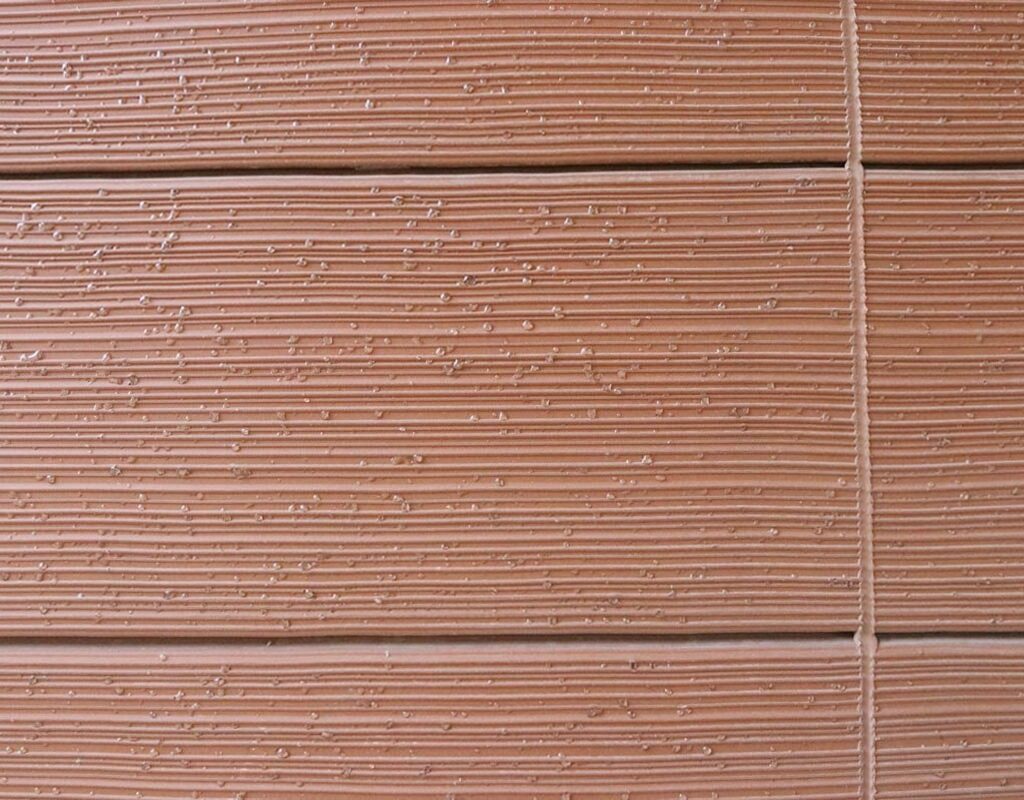
As for the terracotta sticks, LOPO uses a special production process, so that the same batch of ceramic sticks naturally form a subtle and rich color, from anthracite to deep red, from brick red to brown. Terracotta sticks of various colors are installed vertically in a random manner, as if water flows through the building, like musical symbols, playing beautiful and harmonious movements.
